Zenigata Sunae (coin-shaped sand art) at Kotohiki Park.
I
had one more day remaining at the guesthouse in Toyohama and Kanonji, my plan was to rest easy. I bought food at a nearby market, The redone kitchen was next to my room. I was set. So I thought.
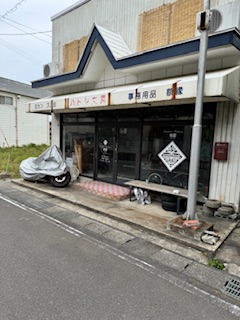
My host urged me to visit the town for a little bit before I moved on. He mentioned the six hundred year old coin-shaped sand art at Kotohiki Park (Kotohiki Ko-en), places to eat, and an onsen.
I passed the park the day before on the path leading to and from temples 68 and 69. I was unaware that both temples were on the other side of the vast grounds.
So, I left the house and walked to the park. It is not close! However, I finally reached the Saita River and crossed over on the Sanka bridge to the entrance.
I was curious about the sand art.
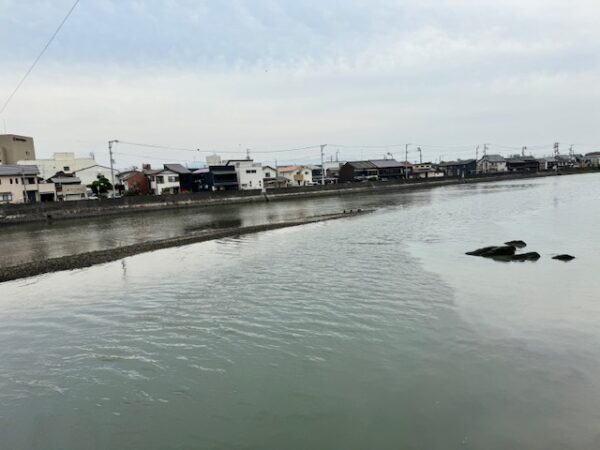
Saita river.
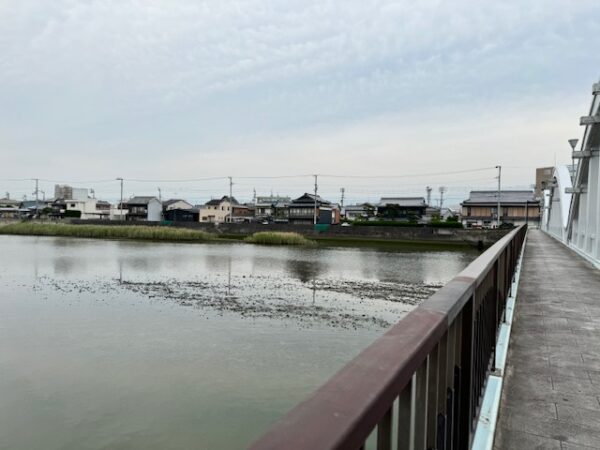
Sanka bridge.
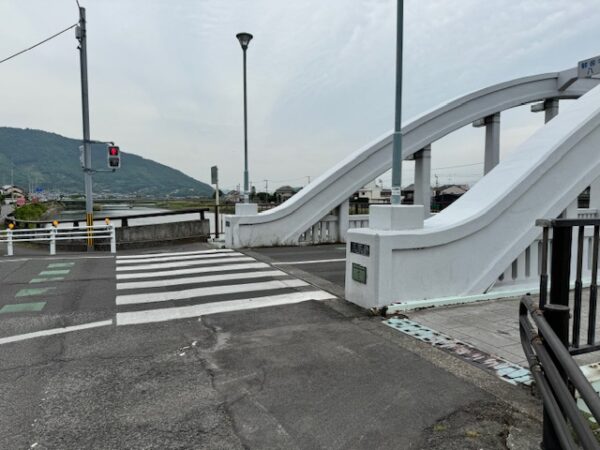
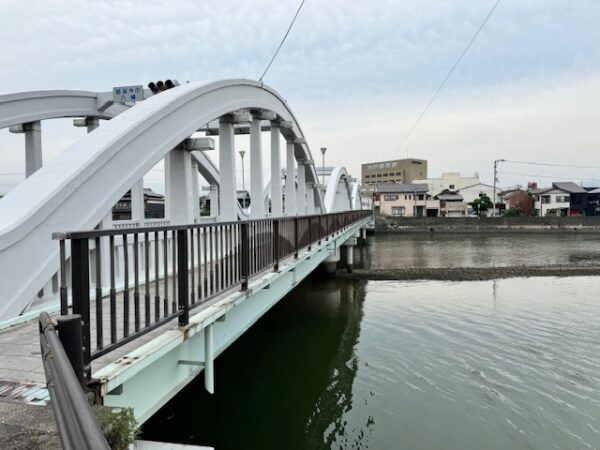
Kotohiki Park
In Kan’on-ji, Kagawa Prefecture.
Kotohiki Park is a nationally designated “Place of Scenic Beauty”. It has a beach and greenery. More than 200 cherry blossom trees bloom here in the spring. Temples 68 and 69 are here, too.
Due to the coin art, it is a power spot – a place believed to contain sacred power and special healing properties.
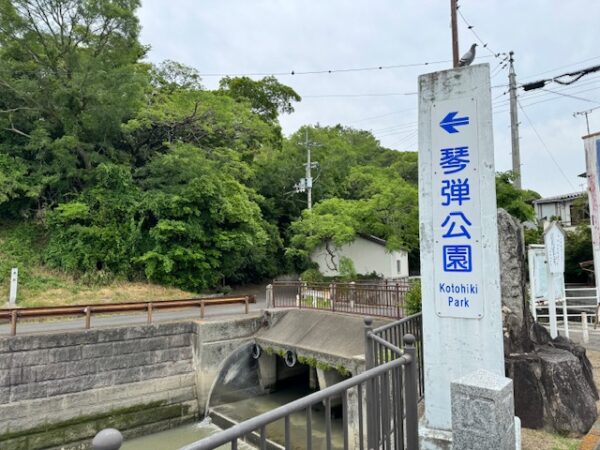
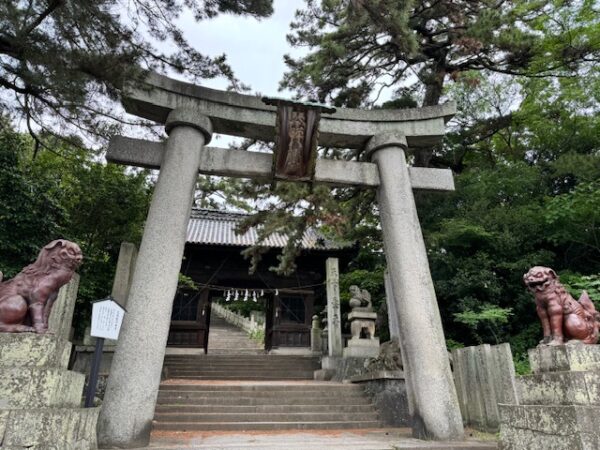
A large stone torii gate in front of Kotohiki Hachimangū shrine dominates the road leading into the park.
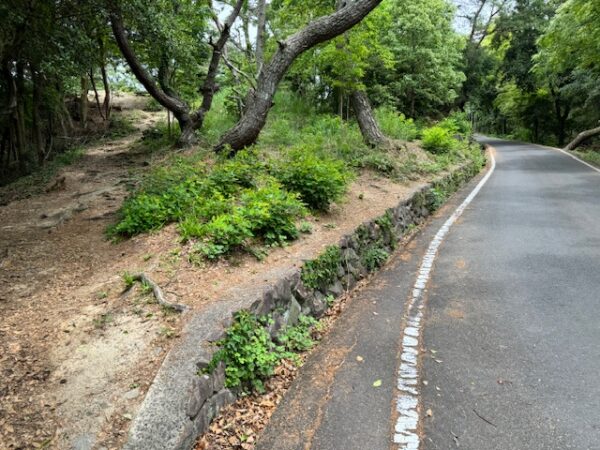
The road runs throughout the park to a coin museum and other departments. An exit off the road leads to the observation point for the sand sculpture. That road winds up a steep hill. It took more than 20 minutes to walk up to the observation summit.
Close to the summit, another opening off the road leads through a forest to a rustic walking path near the observation area.
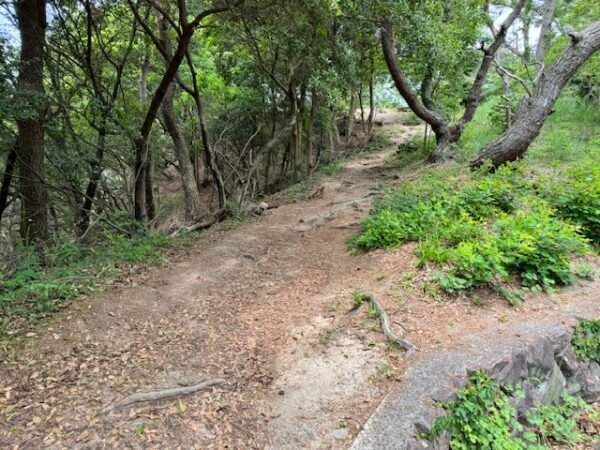
It seems that the observation deck was constructed to be somewhat unobtrusive.
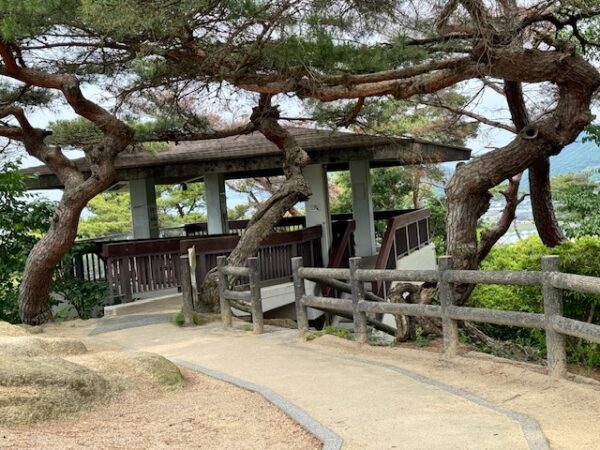
Large rocks complete the prehistoric look of the summit and deck.
The Seto Sea snakes between the mountains and city below.
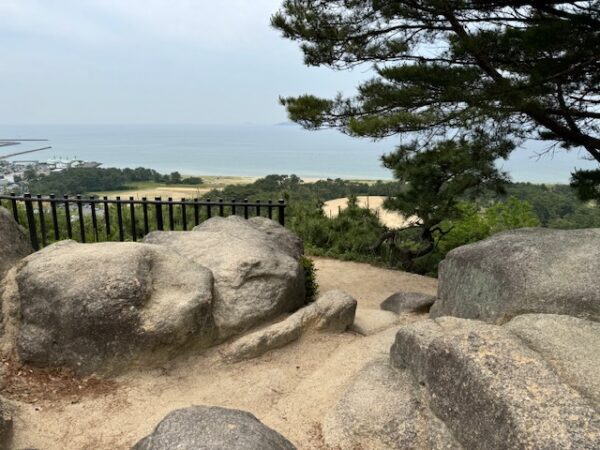
The feeling
I sensed an aura or vibration from this spot on the summit. There was something here – a spiritual wave – that washed over me. It was exciting, fearsome, and unsettling. I did not feel like myself. In this moment – in this spot – I felt my life had forever changed.
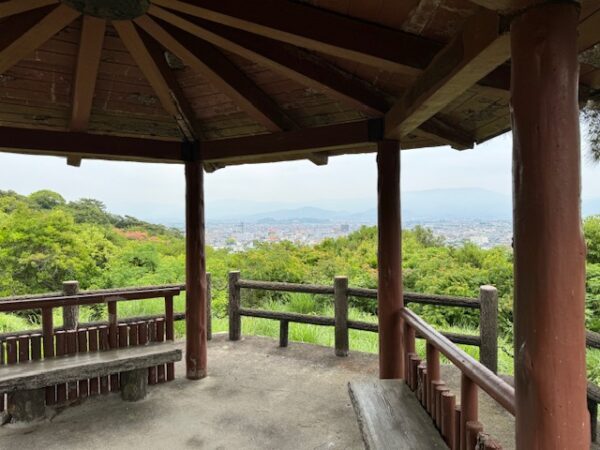
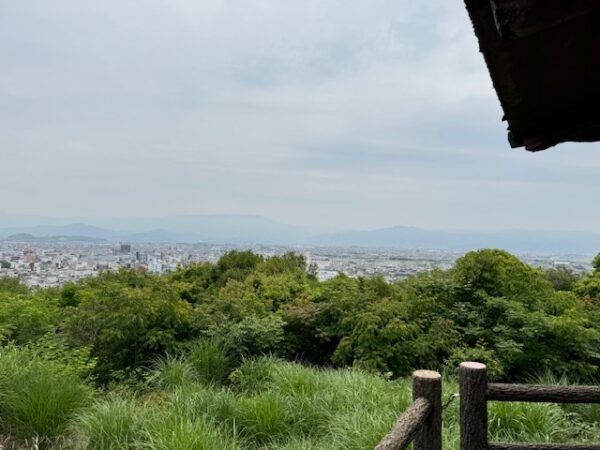
According to legend, the sand art was made in one night as part of an effort to welcome local feudal lords in 1633.
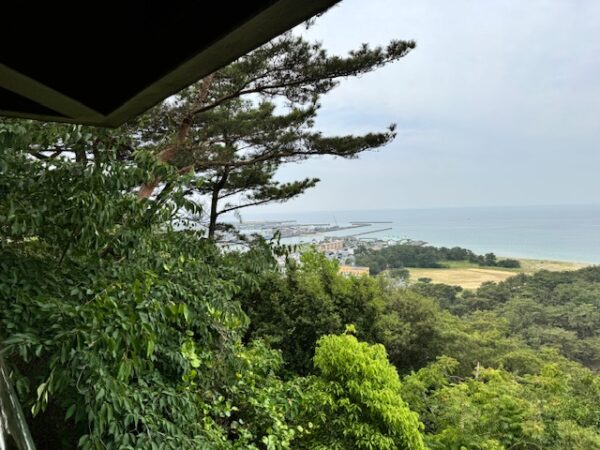
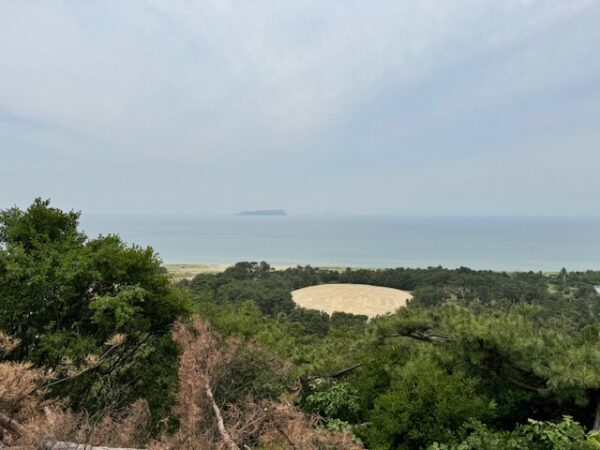
Also, if you see the sand art, you will live a long and healthy life and have no problems with money. The area with the sand sculpture is off-limits, but it is visible from the summit observation deck.
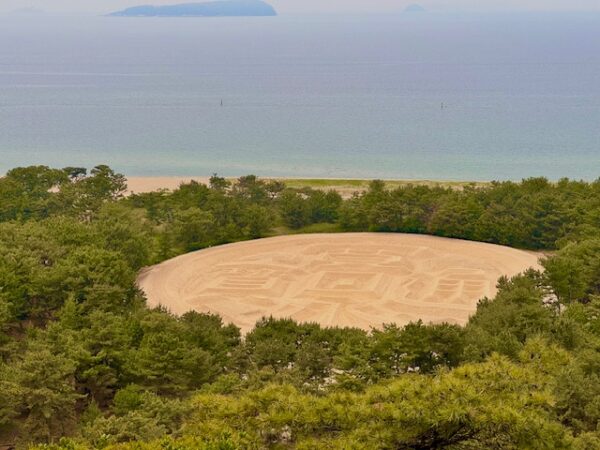
Nowadays, citizen volunteers take care of the sand sculpture.
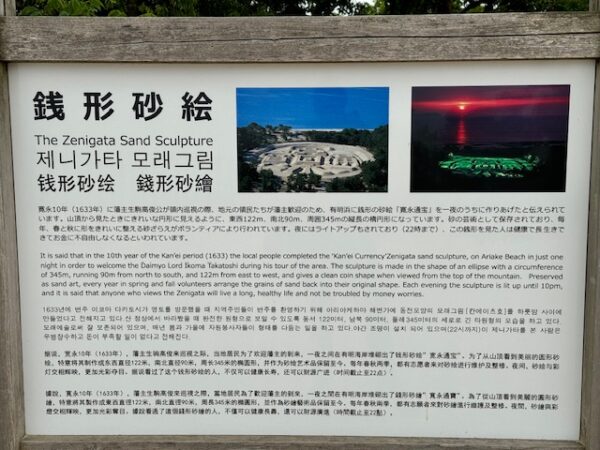
The information marker gives a brief history of the sand art in five languages.
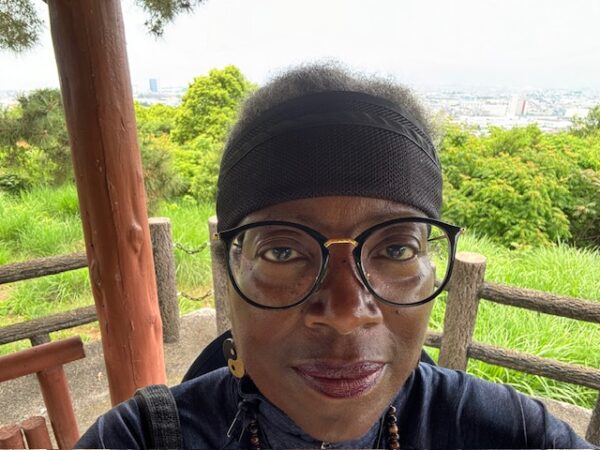
Other shrines, statues and structures in the park attract visitors and pilgrims on the path. Temples 68 and 69 are located elsewhere on park grounds. The place is so big that the temples are not visible from the deck.
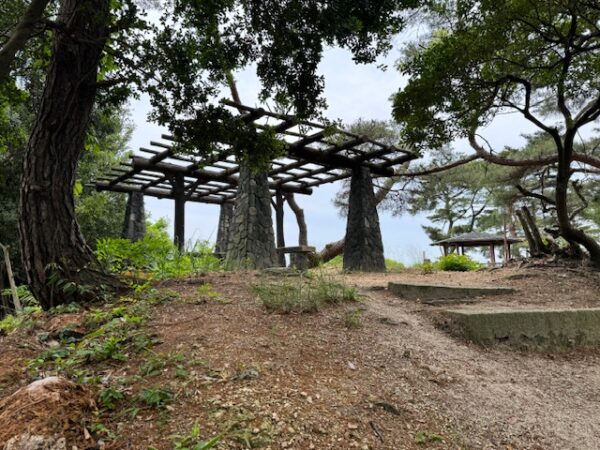
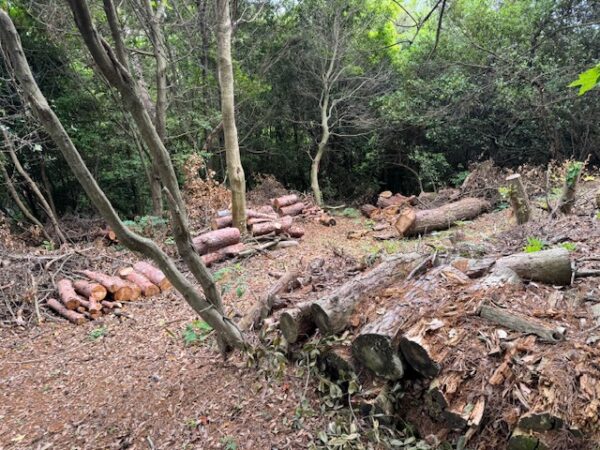
Timber is harvested from old trees. Many trees and tree parts are tagged.
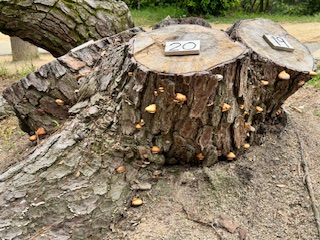
It is time to head back down the hill and return to the park entrance.
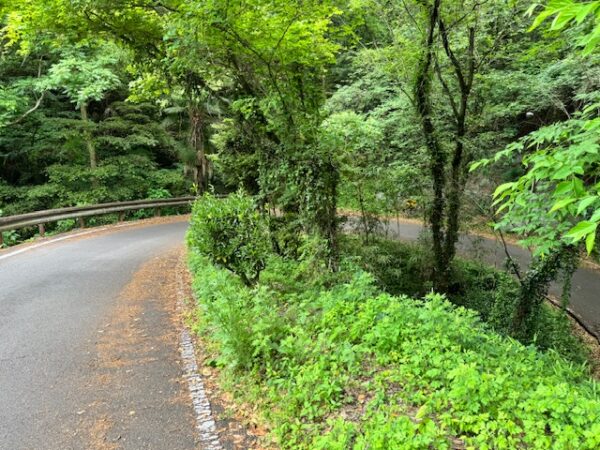
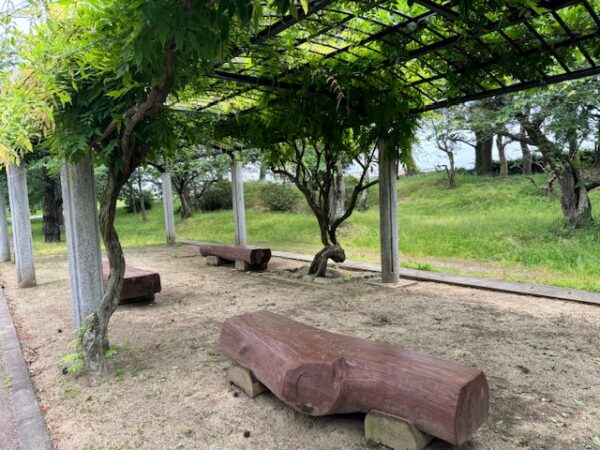
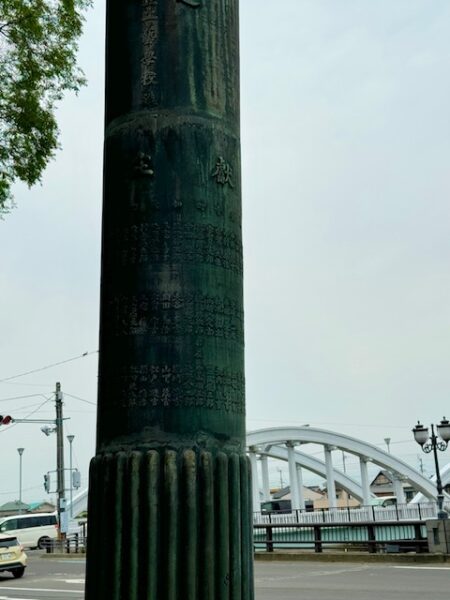
The engraving on the pole in front of the shrine is very impressive.
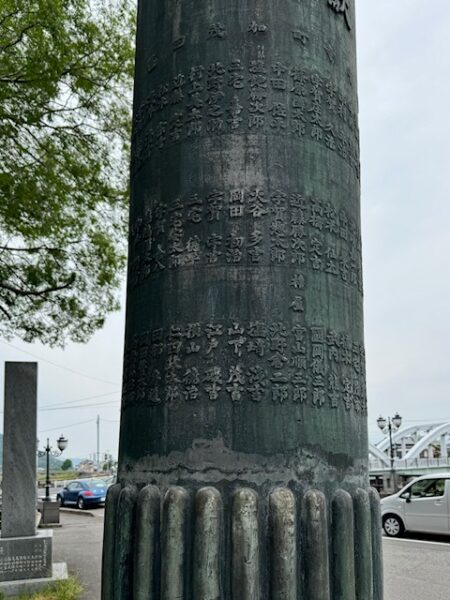
Then, I crossed the river bridge and returned to the guesthouse.
Hinting Hiroshima
I discovered that more guests had checked into the house. Two men, who I saw earlier at a few temples, stopped here for the night. Whenever our paths crossed, we always greeted each other.
There was a woman who had joined the two men for a trip to Unpen-ji. They were all friends. She was not a pilgrim but instead was on a special mission. Her mother had walked on the path at an earlier time in life. The woman – her daughter – intended to fill in a few blanks in her dear mother’s album with photos of the 88 temples, goshuin or stamps.
They were all setting out to reach Unpen-ji. It was an affectionate reunion of long-time friends. The men had planned to walk up the mountain. The woman was not walking but would meet them near the temple grounds.
It had all of the elements of one good year.
I got to know the woman a little better when we were alone. We bonded through our similar stories as women who have lived a while on this earth! She was from Hiroshima originally but spent her life living and working in the US. Her mother still lived in Hiroshima.
Soon, my new friend asked me if I planned to visit Miyajima, home of a unique shrine. I had considered going there, but did not believe it was a possibility. Every time I thought about it, I immediately dismissed it.
The logistics frightened me. I was afraid to leave Shikoku island. My fear was triggered by a lack of information. I realized that later.
Wearing the same shoes
My new friend strongly encouraged me to visit Miyajima and Hiroshima. I had concerns and I expressed some during our talk. Given the history of the destruction inflicted between the US and Japan, I was concerned that I would stand out for the wrong reasons. Would I experience lingering resentment from the people living there? I’d understand if I did.
I can listen. I can talk. However, I do not carry the burden or responsibility for the actions of others who seek to justify terrible acts. Still, I am self-aware and have empathy for my fellow woman and man. My presence on the island may not produce the best reactions… for many reasons.
There are and will always be generational efforts to recover from the sadness, hurt, and loss. The feelings are deep, embedded in the psyche, hearts, and minds of everyone touched by these events. I am no stranger to similar happenings and feelings… at home. Will I be welcome? Will I be safe?
She said that I may experience some tension. Her answer was honest. I appreciated that. And she got me thinking.
It was a good conversation.
The next morning
It was an early morning for us all. The men were already gone. My friend was preparing to leave to meet them at Unpen-ji.
I was getting ready to visit temple 70, Motoyama-ji.
Good luck to us all
See you next time.
Baadaye and Mata Ne
Shirley J 🌸
This and several posts this summer will chronicle my pilgrimage in Japan where I am walking the 1200 kilometer-long Shikoku 88 temple pilgrimage. Read my announcement here.
I am excited, and I am here, still walking. And just know this, I will return to tell the tale!

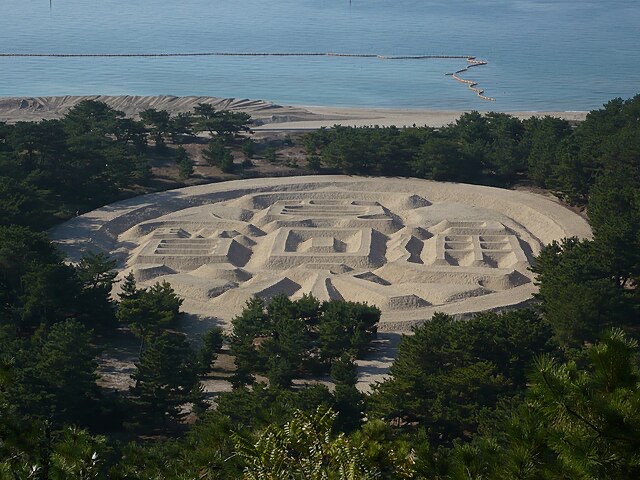
2 thoughts on “🌸 Noire Henro-San: Kotohiki Park”
A nice park, a place of power, and two temples as well? Quite a day!
Yes, it was a nice day, in a nice place, with nice people. 🌸
Comments are closed.